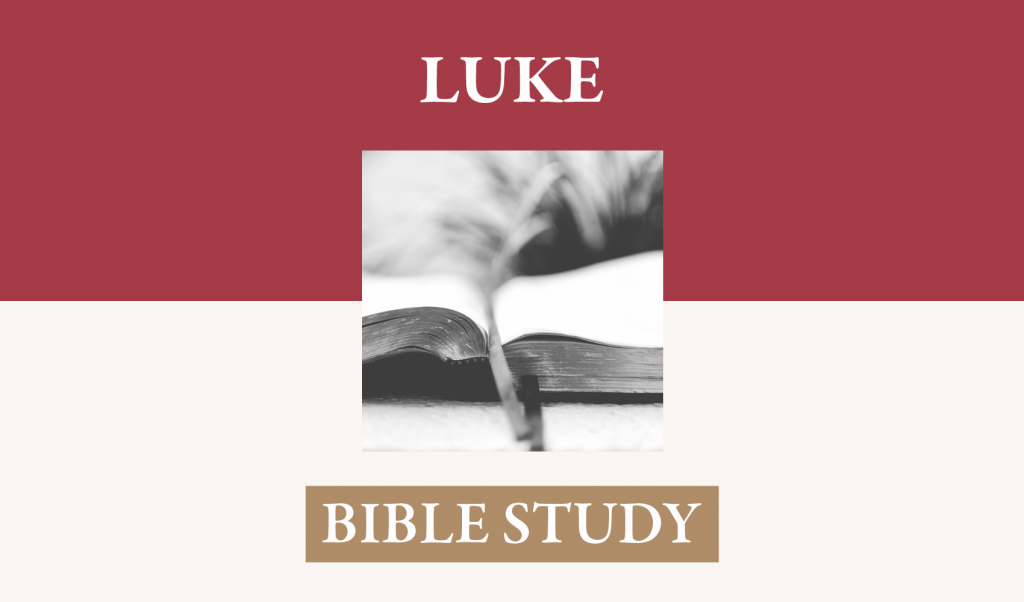JESUS’ RESURRECTION: FACT OR FICTION?
Lesson Focus: This lesson challenges learners to believe and celebrate that Jesus is the living Lord and Savior.
Remembering Jesus’ Promise: Luke 24:1-8.
[1] But on the first day of the week, at early dawn, they went to the tomb, taking the spices they had prepared. [2] And they found the stone rolled away from the tomb, [3] but when they went in they did not find the body of the Lord Jesus. [4] While they were perplexed about this, behold, two men stood by them in dazzling apparel. [5] And as they were frightened and bowed their faces to the ground, the men said to them, "Why do you seek the living among the dead? [6] He is not here, but has risen. Remember how he told you, while he was still in
[1-3] The new week starts normally enough. Having fulfilled the law of the Sabbath, the women go to the tomb to anoint the body. The women went to the tomb probably as soon as they could see. The rolled-away stone is an invitation to go in the tomb and anoint the body. There is a nice literary contrast in 24:2-3 between what they found on arrival (the stone rolled away) and what they surprisingly did not find upon entering (Jesus’ body). In first-century Israel a round stone disc was often placed in a channel carved in the rock so it could be rolled easily to cover the usually rectangular tomb entrance. But the stone might merely have plugged the entrance, with no channel. There is no way to know which is the case here. The women find the tomb open, but they do not find the body of the Lord Jesus. God’s providence and control are in view in these events. This is clearly a surprising event that the women were not expecting.
[4-6a] The empty tomb leaves the women at a loss about what has happened. They are perplexed. They had not expected an empty tomb and wonder about it. During their reflection, two men appear to the women. Only later does Luke call these men angels [24:23]. The appearance of the angels produces terror in the women. Bowing is a sign of recognition of the presence of heavenly beings and divine messengers. The women know that something is happening, but they have no idea what it is, as the following rebuke shows. The women do not recognize that Jesus is raised; they have not heeded His teaching about His suffering and exaltation. The angels explain that the absence of Jesus’ body is the result of resurrection.
[6b-8] The angels tell the women to recall Jesus’ teaching in Galilee, an allusion to 9:22 and 18:32-33. What has happened should not have been a surprise. Despite Jesus’ teaching, the resurrection was too unbelievable to register with the disciples until after it occurred, a reaction that is natural enough, given the rarity of such an event. In one of the most important passages in the chapter, Luke summarizes Jesus’ prediction that is now fulfilled. The angels allude to sayings reported in 9:22,44 (other key Lucan passion sayings are Luke 17:22; 18:31-33; 22:22; 24:44,46; Acts 2:36; 3:13-15; 4:27; 7:52; 10:39). The use of Son of Man describes Jesus’ authority as 22:69 made clear. The angels speak of the necessity of these events with the use of must. Luke stresses God’s plan and the movement of divine history. What is happening is no surprise; it is a part of a divinely wrought event sequence. The message is summarized in three infinitives that express what God’s plan involved: delivered, crucified, rise. They portray what God has planned will occur, though humans are directly responsible for the first two actions. Each idea is important to the event’s movement. The act of executing Jesus is judged by heaven. First, in speaking of Jesus’ being given over, Luke has in mind the details of what he described in Luke 22-23: the Jewish leadership and Pilate’s failure to stop the process [see Acts 4:25-28]. Sinful people were permitted to hand Jesus over and arrest him. Second, Jesus is crucified. Other sayings refer to the mistreatment that preceded Jesus’ crucifixion [Luke 18:32-33], His being killed [9:22], or His being given over [9:44]. The specific reference to crucifixion fills out the detail of what took place. Third, Jesus was resurrected on the third day. It is clear that the church counted the three days on an inclusive basis: Friday was day one, Saturday day two, and Sunday day three. The women are to realize that the resurrection is an expected part of God’s plan. Luke relates the first of two report-response sequences in this section. Here the angelic report brings the women’s response of remembrance (later the women’s report in 24:9-11 will lead to Peter’s response in 24:12 to see the tomb for himself). The women recall Jesus’ teaching and respond. The women report not only the angelic visit, but, more important, the fulfillment of Jesus’ teaching about resurrection. They do not tell it as a mere passing on of information, but undoubtedly with some urgency since it is regarded as too strange to be true.
Confirming Jesus Lives: Luke 24:36-40.
[36] As they were talking about these things, Jesus himself stood among them, and said to them, "Peace to you!" [37] But they were startled and frightened and thought they saw a spirit. [38] And he said to them, "Why are you troubled, and why do doubts arise in your hearts? [39] See my hands and my feet, that it is I myself. Touch me, and see. For a spirit does not have flesh and bones as you see that I have." [40] And when he had said this, he showed them his hands and his feet. [ESV]
Luke 24:1,13, and 33 suggests a link of all these events as occurring on resurrection day. Events are coming fast and furious. Jesus stands in the midst of the disciples. He appears as quickly as He disappeared in Luke 24:31. The greeting is one of comfort, in which Jesus offers the peace He promised to bring. Jesus’ appearance startles the group. They do not initially recognize Jesus. To calm the alarmed group, Jesus asks two questions. The first addresses their mood: Why are you alarmed? The second question concerns their lack of perception: Why do doubts arise in your hearts? Once again the disciples are portrayed as slow to accept the resurrection. They do not expect Jesus to be raised nor do they expect Him to keep appearing. As with most people, they have to be persuaded. The disciples are as skeptical as the rest of humanity. Jesus calls on the disciples to confirm with their own senses that it is He. Doubt is met with revelation. In identifying Himself, Jesus does so emphatically by using the personal pronoun, myself. Jesus’ remarks about flesh and bone answer the doubts expressed in 24:37. In addition to their eyes they are to use their sense of touch. They are to handle Jesus. This is not a phantom or a vision. It is the raised Jesus whose body has been brought back to life. It has characteristics in a way that the old body could not (e.g., this new body will not perish and it can appear and vanish) and in ways that make his initial appearance startling, not the appearance of merely another disciple. The resurrection body is flesh and bone transformed into a form that is able to move through material matter. There is no way to distinguish the person of Jesus from the risen Christ except that His existence now takes place at an additional dimension of reality. The person buried in the tomb is raised and transformed, but Jesus is sufficiently distinct in appearance that He is not always immediately recognizable. In His resurrected state, He clearly is transformed, though in a way that still leaves traces of His former existence (e.g., the nail prints in his hands and feet). Touch confirms Jesus’ presence. He is resurrected in a form consistent with His previous existence. For disciples and readers alike, there should be no doubt that God has done a miraculous work.
Believing Scripture’s Testimony: Luke 24:44-46.
[44] Then he said to them, "These are my words that I spoke to you while I was still with you, that everything written about me in the Law of Moses and the Prophets and the Psalms must be fulfilled." [45] Then he opened their minds to understand the Scriptures, [46] and said to them, "Thus it is written, that the Christ should suffer and on the third day rise from the dead. [ESV]
Jesus returns to the theme of Scripture fulfillment and the necessity of God’s plan coming to pass. The key term is must be fulfilled, which appears in several texts in Luke to refer to something anticipated in God’s design that has come to pass. Luke commonly uses the perfect participle written to refer to Scripture. Jesus is the topic of Scripture. The events of His life are thus no surprise; they are in continuity with what God revealed throughout Scripture. To underline the comprehensiveness of the fulfillment, the three divisions of the Old Testament are noted: law, prophets and psalms. The prophets contain not only an exposition of the promised Anointed One but a whole array of promises tied to God’s activity in inaugurating and consummating His plan. Jesus walks the disciples through the Scripture, functioning like a prophet in revealing God’s plan. In Luke 24:31-32 the disciples’ eyes and the Scriptures were opened; here it is their minds that are opened to understand God’s message, in contrast to the blindness of 9:45 and 18:34. What the disciples could not grasp before the crucifixion and resurrection now becomes clear. God’s activity in Christ makes scriptural sense after this personal exposition. It is responding to Jesus in belief that enlightens. What is given is understanding and insight into God’s plan. Since these disciples have witnessed God’s plan and now understand it, they are commissioned to proclaim it. What the disciples preach is a result of the outworking of God’s plan. At the center of that plan is what God has done and will do in Jesus. Assurance can come to the believer because a faithful God is in control of events and knows where things are going. Luke introduces the basic content of the Scriptural teaching on God’s plan, summarized in three infinitives. The first is that the Christ should suffer. Since this suffering had already happened, the details are known to the disciples and to Luke’s readers. Such suffering was anticipated by God [Psalm 22; 31; 69; 118; Isaiah 53], although the concept of messianic suffering seems not to have been a part of first-century Jewish expectation. Even the disciples struggled to understand how it fit into God’s plan. Yet in many ways it is the key to Jesus’ career, for in it came the opportunity to deal with the issue of the forgiveness of sins and, as Luke will say in Acts 20:28, to purchase a church with His own blood. The second infinitive is to rise. Luke is clear that the promise is of a quick resurrection, since the usual Jewish hope was of a resurrection on the last day. This hope is defended in Acts primarily on the basis of two texts: Psalm 16:10 and 110:1. With Jesus having suffered and having been raised by God, the message can go forward. The disciples are currently experiencing this element of the hope, but there is more to the plan. With the third infinitive, should be proclaimed, the future of God’s plan appears. In this rich term are bound up the message’s elements that the disciples are to take to the world.
Questions for Discussion:
1. Note how Luke stresses God’s plan and the movement of divine history in 24:1-8. What does Luke’s use of must tell you? The three key verbs of verse 7 (delivered, crucified, rise) are all in the passive voice indicating that someone is in control of these events that are happening to Jesus. Why is it important that Luke emphasizes God’s control over these events? Compare this to Luke’s writing in Acts 2:22-24 and 4:27-28 where he shows that God’s control over these events does not remove the sinful responsibility of those persons involved in causing Jesus to be crucified.
2. What proofs does Jesus provide to His disciples in order to convince them of the reality of His resurrection [see 24:36-40 and 44-46]? Why do you think that Jesus combines His physical appearance with the teaching of Scripture? (The important point to emphasize here is that we need the truth of God’s Word in order to properly understand the physical things that we see. But the combination of the physical appearance with the teaching of the Word shows that spiritual truth is never divorced from historical reality. The events described in Scripture are not "myths" but are actual historical events]. How can you use these proofs in your witness of the resurrection to unbelievers around you?
3. The resurrection of Jesus is often described as a "watershed" event meaning that it is a crucial turning point that significantly affects our thinking and actions. See Paul’s words in 1 Corinthians 15:12-14: Now if Christ is proclaimed as raised from the dead, how can some of you say that there is no resurrection of the dead? But if there is no resurrection of the dead, then not even Christ has been raised. and if Christ has not been raised, then our preaching is in vain and your faith is in vain. Why do you think that the truthfulness of the resurrection of Jesus is so crucial for our faith? See, for example, Romans 1:4; 6:5; Philippians 3:10-11; 1 Peter 1:3.
Luke, Darrell L. Bock, Baker.
Gospel of Luke, Norval Geldenhuys, Eerdmans.
Gospel According to Luke, William Hendriksen, Baker.

















